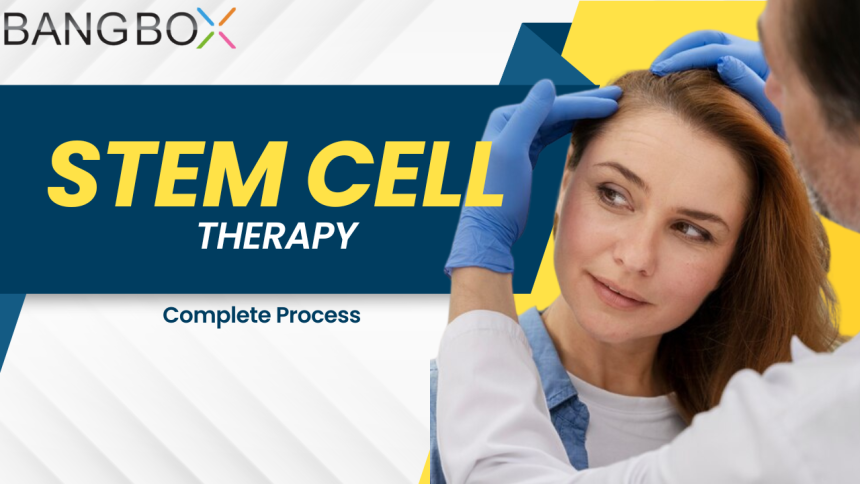
The Comprehensive Process of Stem Cell Therapy
We usually get invested in little things, just as you are in your bald patches. Yes! You heard it right. Your bald patches are not a big deal as our bodies could be their own superheroes. So here enters stem cell therapy in the picture! Join us on this wild ride through the comprehensive process of unlocking the healing magic within. Spoiler alert: it's pretty darn fascinating!
Stem Cell Therapy
Hold tight because we're diving into the world of stem cell therapy, a cutting-edge medical mojo that taps into the special powers of stem cells to kickstart a party of tissue repair and regeneration. This futuristic treatment isn't playing favorites—it's making waves in fields from orthopedics to neurology. Now, let's break down the nitty-gritty of the whole shebang – the complete process of stem cell therapy:
· Patient Consultation and Evaluation:
The process typically begins with a thorough consultation between the patient and a healthcare professional, often a specialist in regenerative medicine or a stem cell therapy provider. The patient's medical history, current health status, and specific condition are assessed to determine the suitability of stem cell therapy.
· Informed Consent:
Once the patient is deemed a suitable candidate, the healthcare provider explains the details of the procedure, potential risks and benefits, and obtains the patient's informed consent. This ensures that the patient has a clear understanding of the treatment and its implications.
· Source of Stem Cells:
Stem cells can be obtained from various sources, including:
ü Autologous (Patient's Own) Stem Cells: Often harvested from bone marrow or adipose (fat) tissue.
ü Allogeneic (Donor) Stem Cells: Obtained from a donor, typically umbilical cord blood or placental tissue.
ü Induced Pluripotent Stem Cells (iPSCs): Reprogrammed cells derived from the patient's own cells.
· Harvesting the Stem Cells:
ü Bone Marrow Aspiration: If bone marrow is the chosen source, a small amount is aspirated from the patient's hip bone.
ü Adipose Tissue Extraction: For adipose-derived stem cells, a minimally invasive liposuction procedure may be performed to collect fat tissue.
ü Cord Blood or Placental Tissue Collection: In the case of allogeneic stem cells, they are sourced from donated umbilical cord blood or placental tissue.
· Laboratory Processing:
Once harvested, the collected stem cells undergo processing in a specialized laboratory. The cells may be isolated, purified, and sometimes expanded in number to increase their concentration.
· Activation and Enhancement (Optional):
In some cases, the isolated stem cells may undergo activation or enhancement processes to optimize their regenerative potential. This can involve exposure to growth factors, cytokines, or other bioactive substances.
· Administration of Stem Cells:
The processed and enhanced stem cells are then administered to the patient. Depending on the specific condition being treated, this can be done through:
ü Injection: Directly into the target area, such as joints, muscles, or tissues.
ü Intravenous (IV) Infusion: Systemic delivery through the bloodstream for conditions that require a broader impact.
· Monitoring and Follow-Up:
After the stem cell administration, patients are monitored for any immediate reactions or side effects. Follow-up appointments are scheduled to assess the patient's response to the treatment, track progress, and make any necessary adjustments to the treatment plan.
· Rehabilitation and Recovery:
Depending on the nature of the condition being treated, patients may undergo rehabilitation or physical therapy to optimize the benefits of stem cell therapy. The recovery period varies based on the individual and the specific condition.
· Ongoing Evaluation and Follow-Up:
Long-term follow-up appointments are scheduled to evaluate the sustained effects of stem cell therapy. This may involve imaging studies, clinical assessments, and ongoing communication between the patient and healthcare provider.
Considerations:
ü Stem cell therapy is a rapidly evolving field, and its application may vary based on the specific medical condition and available research evidence.
ü The regulatory landscape for stem cell therapy may differ between countries, and patients should seek treatments from reputable and licensed healthcare providers.
ü While stem cell therapy holds promise, not all conditions have well-established evidence supporting its efficacy, and further research is ongoing.
Final Words
We're talking about a real game-changer here – stem cell therapy, the rockstar of regenerative medicine. This bad boy has the potential to shake up the way we tackle all sorts of medical conditions.
But, and it's a big but, before you dive headfirst into the stem cell realm, it's crucial to have a sit-down with the pros – qualified healthcare wizards who can give you the lowdown on whether this therapy is the right fit for your unique needs and conditions.





